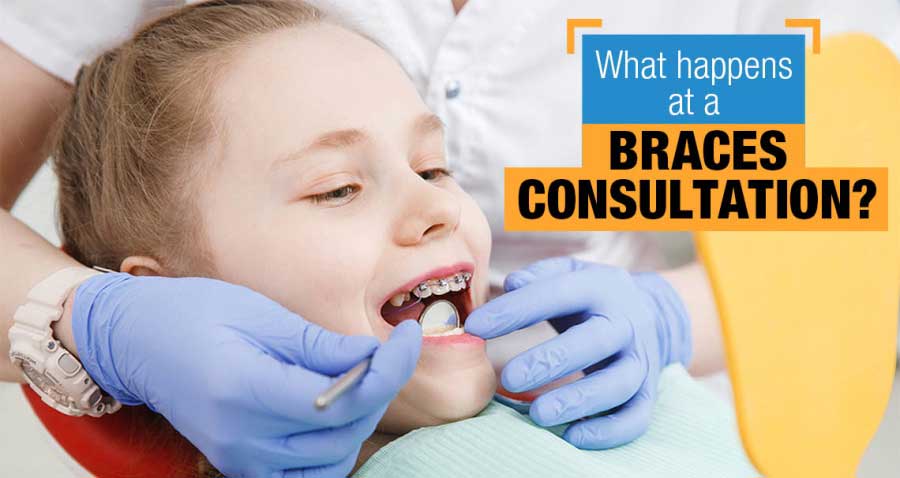Comprehensive Guide to Orthodontics Treatments for Correcting Dental Imbalances
In the realm of orthodontics, the trip to attaining a completely straightened smile includes a myriad of treatments tailored to remedy dental imbalances. From conventional braces to unnoticeable aligners and also surgical alternatives, the field of orthodontics uses a variety of options to attend to differing degrees of dental irregularities. Understanding the intricacies of each procedure, including their devices, advantages, and possible disadvantages, is vital in making notified decisions regarding one's orthodontic treatment. As we browse through the extensive guide to orthodontic treatments for dealing with oral misalignments, the complex details of each technique will unravel, dropping light on the course toward a functional and unified oral positioning.
Orthodontic Procedures Introduction

Along with clear aligners and standard braces, orthodontists might likewise recommend various other interventions like headwear, palatal expanders, or retainers to deal with details positioning issues (cumming aligners). These treatments are tailored to every patient's special needs and might involve a mix of therapies to accomplish the desired outcomes. Routine changes and tracking are important components of orthodontic treatment to make certain development gets on track and to make any essential adjustments along the means. By undergoing orthodontic treatments, patients can not only accomplish a straighter grin but likewise boost their overall oral wellness and function.
Conventional Braces: Exactly How They Work
When considering orthodontic therapies for dental imbalances, conventional dental braces stand out as a tried and true method for remedying teeth positioning. Standard braces consist of brackets, cables, and bands that work with each other to use constant pressure on the teeth, slowly relocating them right into the desired positioning.
As pressure is applied to the teeth via the dental braces, the bone surrounding the teeth is reshaped to support the new tooth settings. People will certainly need regular adjustments at the orthodontist's workplace to make certain the braces continue to apply the appropriate pressure for effective teeth activity.
Invisible Aligners: Advantages And Disadvantages
These clear, customized trays are virtually undetectable when used, making them an attractive option for people seeking a more cosmetically pleasing orthodontic therapy. Clients can remove the aligners prior to eating or cleaning their teeth, lowering the danger of food getting stuck in the device and simplifying the cleaning procedure.

Surgical Orthodontic Options
Surgical interventions in orthodontics present feasible alternatives for addressing complex dental misalignments that may not be successfully settled via conventional orthodontic treatments. While conventional braces and unnoticeable aligners can deal with several orthodontic concerns, particular instances call for medical treatment to attain ideal outcomes. Surgical orthodontic choices are commonly advised for extreme malocclusions, substantial jaw disparities, and instances where the underlying bone framework requires adjustment to accomplish appropriate placement.
One common medical orthodontic treatment is orthognathic surgical procedure, which includes repositioning the jaws to fix functional problems such as problem chewing or talking. This surgery is often executed in cooperation with an orthodontist who helps straighten the teeth prior to and after the procedure. Surgical orthodontics might additionally include procedures to subject affected check that teeth, remove excess periodontal tissue, or improve the jawbone to produce a much more unified face profile.
Prior to taking into consideration surgical orthodontic options, people go through a comprehensive assessment to determine the requirement and potential advantages of such interventions. cumming aligners. While surgical treatment may appear complicated, it can considerably boost both the function and aesthetic appeals of the smile in cases where traditional orthodontic therapies fall short
Retainers and Post-Treatment Treatment

Post-treatment treatment involves following the orthodontist's guidelines diligently. This might consist of correct dental health methods, attending follow-up appointments, and using the retainers as recommended. Failure to adhere to post-treatment treatment instructions can lead to relapse, where the teeth slowly return towards their initial settings. Consistent retainer wear, great oral health, and normal dental exams are essential for preserving the results accomplished with orthodontic surgical procedure and making sure the lasting security of the fixed dental placement.
Conclusion
In final thought, orthodontic procedures supply numerous choices for correcting oral misalignments. Surgical orthodontic alternatives are offered for much more extreme misalignments. Overall, orthodontic treatments can efficiently boost dental wellness and aesthetic look.
As we navigate via the detailed guide to orthodontic procedures for correcting dental misalignments, the complex details of each technique will unfold, losing light on the path towards a useful and harmonious oral alignment. - orthodontist
One of the most usual orthodontic treatments is the dentist dental care use of dental braces, which consist of metal braces and wires that apply gentle stress to gradually move teeth right into the wanted position.When dental crown for child taking into consideration orthodontic treatments for dental misalignments, typical braces stand out as a tried and true approach for correcting teeth positioning. Furthermore, invisible aligners may not be appropriate for intricate orthodontic issues that require even more substantial teeth activity, as they are usually suggested for light to modest cases. Retainers are tailor-made orthodontic tools designed to hold teeth in their fixed positions after the completion of orthodontic treatment.